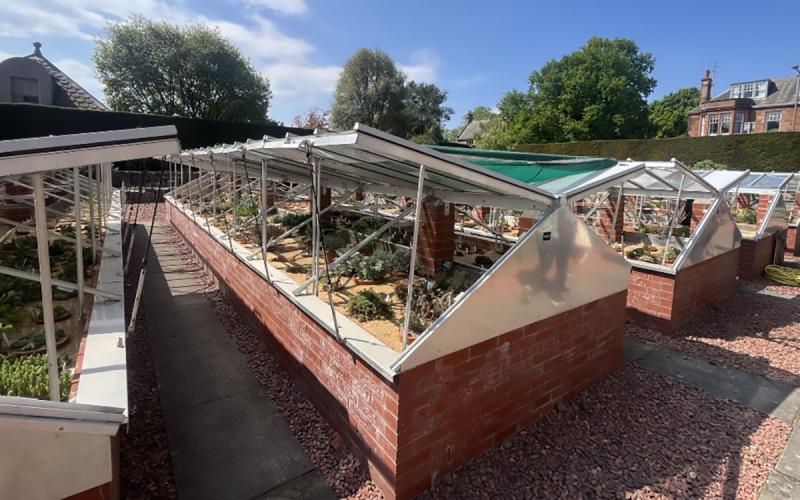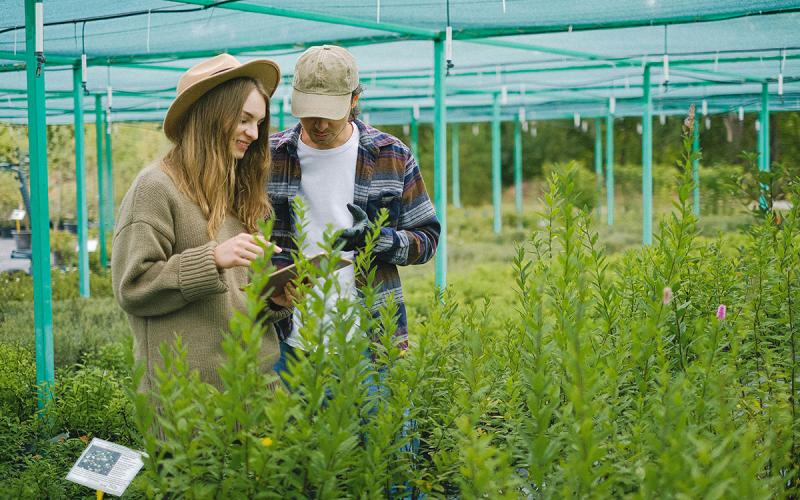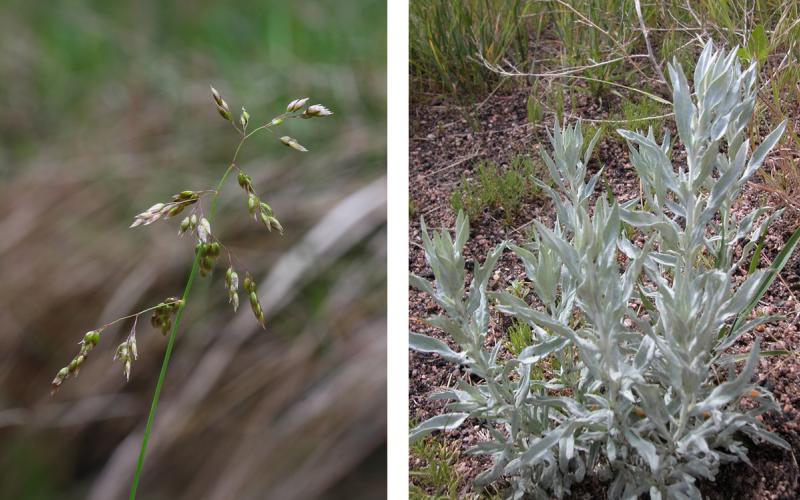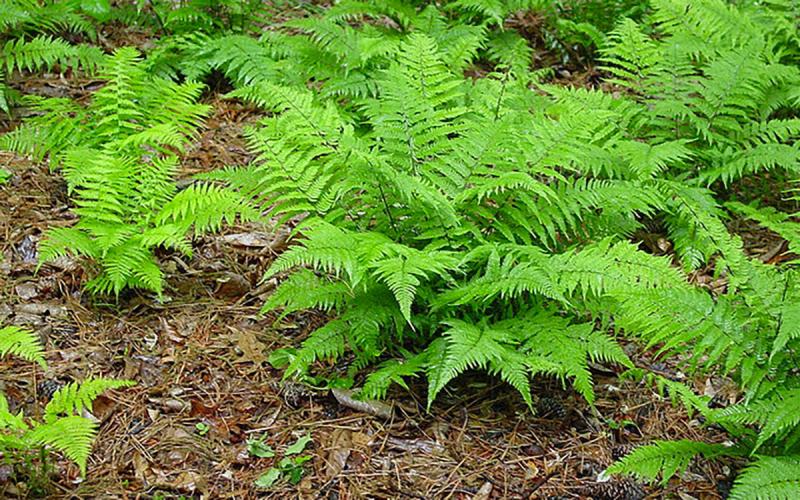
Original article by David Graper, former SDSU Extension Horticulture Specialist and Master Gardener Program Coordinator. Updated by Kerry Pile, SDSU Extension Horticulture Assistant; and Kristine Lang, Assistant Professor, Agronomy, Horticulture, and Plant Science. Special thanks to SDSU Extension Master Gardener Trainee, Max Peterson, for editorial review of this article.
When people think of a natural shady area in the woods, they probably expect to see ferns growing there. Ferns are commonly found where they get at least some sun during part of the day, or where they receive dappled sunlight most of the day. In fact, most ferns will not grow very well in dense shade. They need some sun to grow best. The next time you can walk in a wooded area where ferns are growing, make note of their proximity to sunlight. They are usually along the edge of the woods, or maybe along paths in the woods, not under the largest tree canopies where sunlight is most limited.
Fronds
Fern leaves are different than most other plants. They are called fronds, and are made up of smaller leaflets called pinnae, giving the frond an appearance like a feather. And, unlike most other plants, ferns do not produce flowers, seeds, or fruit. Instead, they produce spores from specialized structures called sporangia.
The sporangia may be located on the undersides of some fronds or on separate fertile fronds, whose primary purpose is to produce spores. The sterile, non-spore-producing fronds arise in early spring from a central crown. They are frequently called fiddle-heads, because of the fiddle-like appearance of these structures. They are usually medium green but may turn brown or yellow if damaged during the growing season. The sterile fronds remain on the plant all Summer and into Fall, until damaged by freezing temperatures.
Fronds
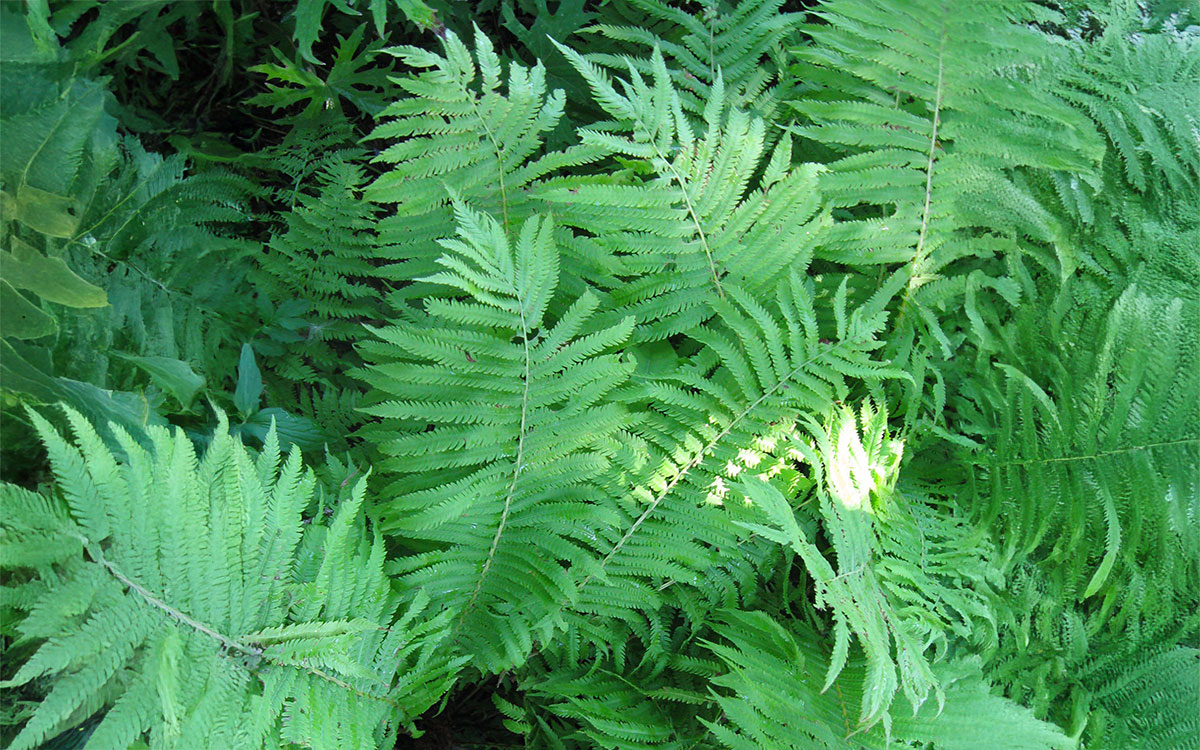
Fertile Fronds

The fertile fronds do not develop until mid-Summer. They may start outgrowth as green, tightly curled fronds, but later grow to a height of up to 12 inches and turn dark brown. These fronds tolerate freezing temperatures better than the sterile fronds but will eventually succumb. The following Spring, the fertile fronds release their spores to start new plants.
Selections to Consider
Dozens of different kinds of ferns are available for planting in shady gardens but, unfortunately, many of them don’t grow very well in South Dakota, mostly because of the harsh climate, but partly due to soil characteristics and other factors. The species below, however, can be grown successfully in South Dakota.
Ostrich Fern
(Matteuccia struthiopteris)

Ostrich Fern (Matteuccia struthiopteris) is probably one of the more commonly planted ferns, and a native plant in our region. As a large fern, it grows up to four feet tall, with an individual plant spreading to a foot or more wide. Its pinnae are deeply dissected, further enhancing the feather-like appearance of the leaves. Ostrich fern forms colonies of plants once it is established, eventually forming a nice patch of ferns. It spreads by rhizomes or by spores.
This fern grows best in moist soils with some sun exposure, preferably in the morning, while avoiding the hot afternoon sun. The sunnier the location, the more important it is for the plant to have plenty of moisture. It prefers to grow in slightly acidic soils with plenty of organic matter, but it will grow reasonably well in sandy soils as well, if it gets plenty of water.
Lady Fern
(Athyrium filix-femina)
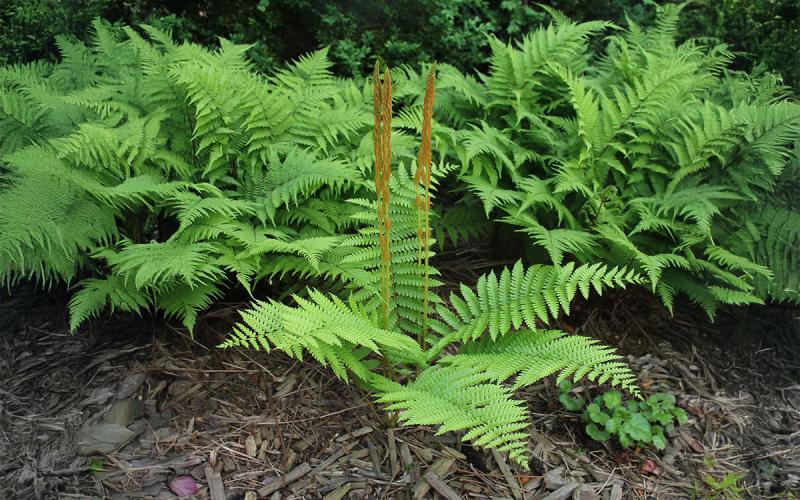
Another tall fern is Athyrium felix-femina, generally known as the Lady Fern. This fern is native to our area and, although more drought-tolerant than Ostrich Fern, it still grows best in moist soil, perhaps near a stream or pond. It prefers a shady to partly sunny planting location.
This fern does not usually grow as large as the Ostrich Fern, nor does it spread as rapidly, but it can form a nice colony of plants. Mature plants can grow up to about three feet tall and a foot wide. It mostly spreads by rhizomes over a period of several years, and it also produces spores from fertile fronds that develop mid-Summer. One popular cultivar, “Lady in Red,” has more-prominent, reddish petioles than the typical species of fern.
Japanese Painted Fern
(Athyrium niponicum)

Another good species of fern for South Dakota, the Japanese Painted Fern,Athryium nipponicum “Pictum,” is related to Lady Fern. Japanese Painted Fern plant was the 2004 Perennial of the Year, as proclaimed by the Perennial Plant Association. As a lower-growing fern, it reaches only about 12 to 18 inches in height. It spreads by rhizomes. Japanese Painted Fern is known as the painted fern, because its finely textured, silvery fronds also have a tinge of red if grown in an adequately sunny location. It grows best, however, when not exposed to full sun and if shaded from hot afternoon sun. There are several cultivars available that have slight differences in coloration of the fronds. Particularly, its petioles and veins are often red to burgundy in color. Japanese Painted Fern is not native to our area, but it does have good hardiness, particularly if the fronds are allowed to remain on the plant at the end of the season after they turn brown. The fronds can be pruned off in Spring, when new growth appears, if desired.
